
Buddleja forrestii and
Buddleja macrostachya
Supplementary Gallery
I have accrued too many photos of cultivars and hybrids of these two species to show on a single page, so I have added this supplementary gallery of a few extra plants. Both species are very variable, and I have tried to show some of this diversity.
Hybrids can be difficult to identity if you don't know the parentage. I've shown a couple of hybrids of my own where the parents are known, and also a putative hybrid whose origins are unknown.
B. forrestii W/O 7061 (B)
The plants grown from this seed collection were quite variable. This one has the best inflorescence and foliage out of all the siblings. The flowers are pure white and the plant similar to others of this species type I'm growing. On the plus side, it appears hardy.
Open full size image in a new window
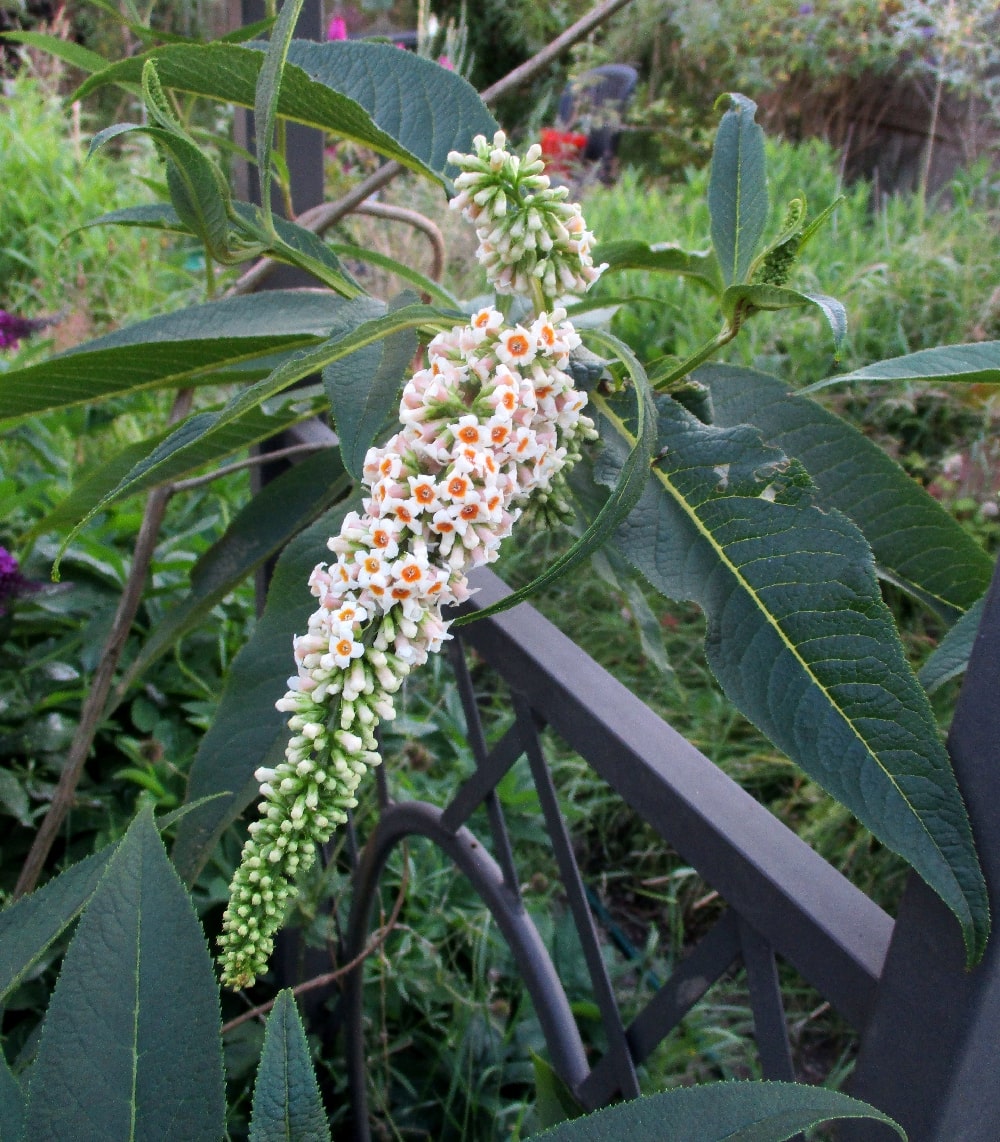
B. forrestii W/O 7061 (M)
A sibling of the one above, differing in its downward pointing flowers which are more off-white in colour. This one shows some features more associated with the allied species B. macrostachya - tomentose exterior to the longer, almost cylindrical corolla tube, tomentose ovary. I am, however, quite confident it is B. forrestii as all other indicators point to this species.
Open full size image in a new window
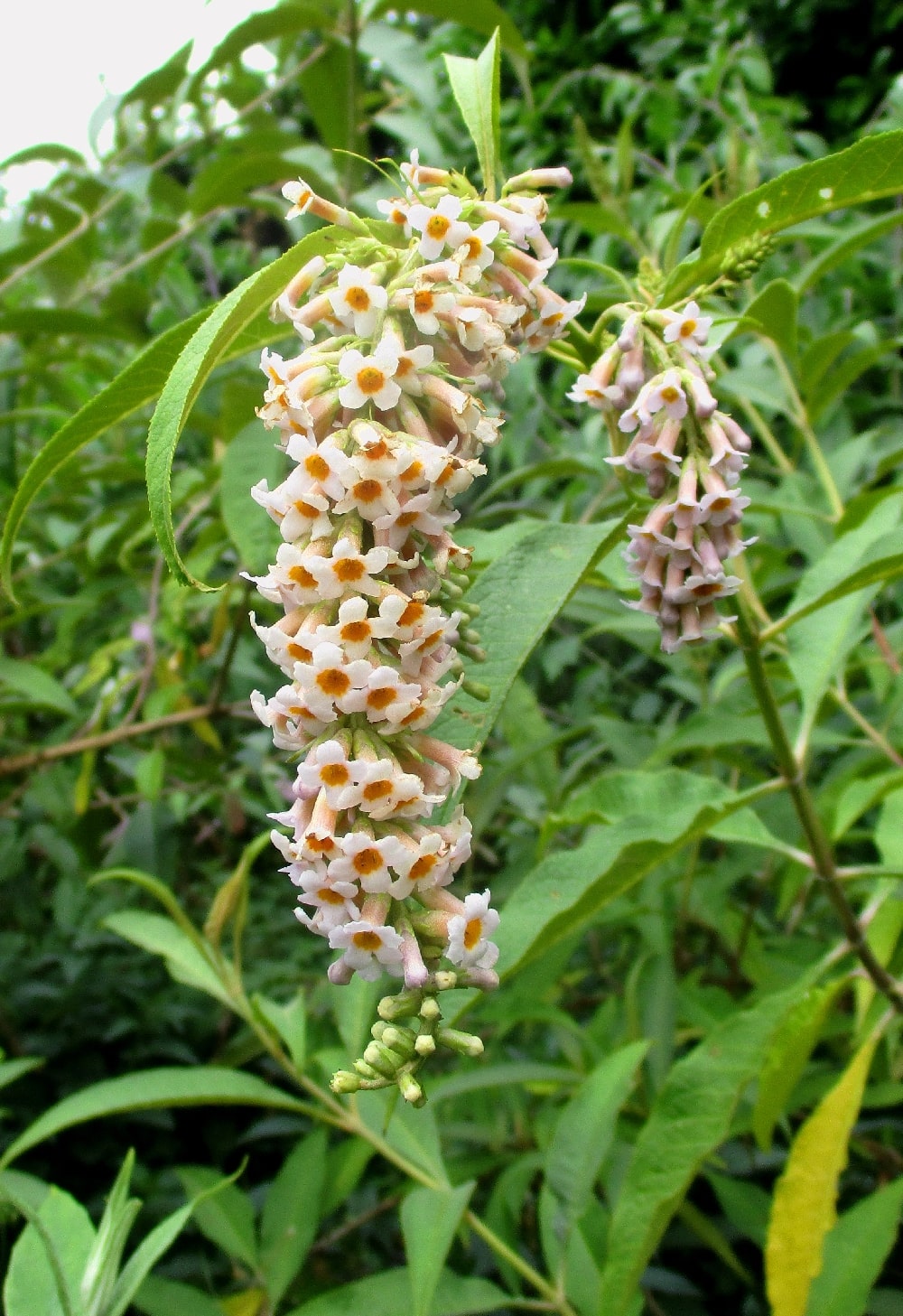
B. forrestii (probably!)
B. forrestii and B. macrostachya can be very hard to tell apart, and some plants can be ambiguous. It's possible there are intermediate forms, which could be hybrids. This one is a seedling of B&L12491 from west Yunnan, China and currently grown at Logan in Galloway, part of the Royal Botanic Gardens Edinburgh. I'm guessing B&L12491 is self-fertile as there was no variation in its progeny.
Currently identified as B. macrostachya, it does indeed appear at first glance to be that species and very similar to SBEC360. However, looking closer I believe it might be better classified as B. forrestii. The ovary and exterior of the corolla tube are mostly glabrous. Although the corolla tube is slightly longer and more cylindrical than average for B. forrestii, the pistil is also long and the stigma level with the stamens.
Open full size image in a new window

Buddleja forrestii form limitanea?
A plant of unknown origin, and it came to me erroneously labelled as B. delavayi, a very different species. Several different B. forrestii collections were introduced into the UK via the Royal Botanic Gardens Edinburgh, and most likely this is one of those, its label being lost at some point. It most closely resembles the 'limitanea' type, but could have introduced under one of several synonyms.
The individual flowers are a little larger than others of the 'limitanea' type, and the inflorescence panicle is more densely packed. Crosses readily with other B. forrestii plants, although it does have a preference for the 'limitanea' type.
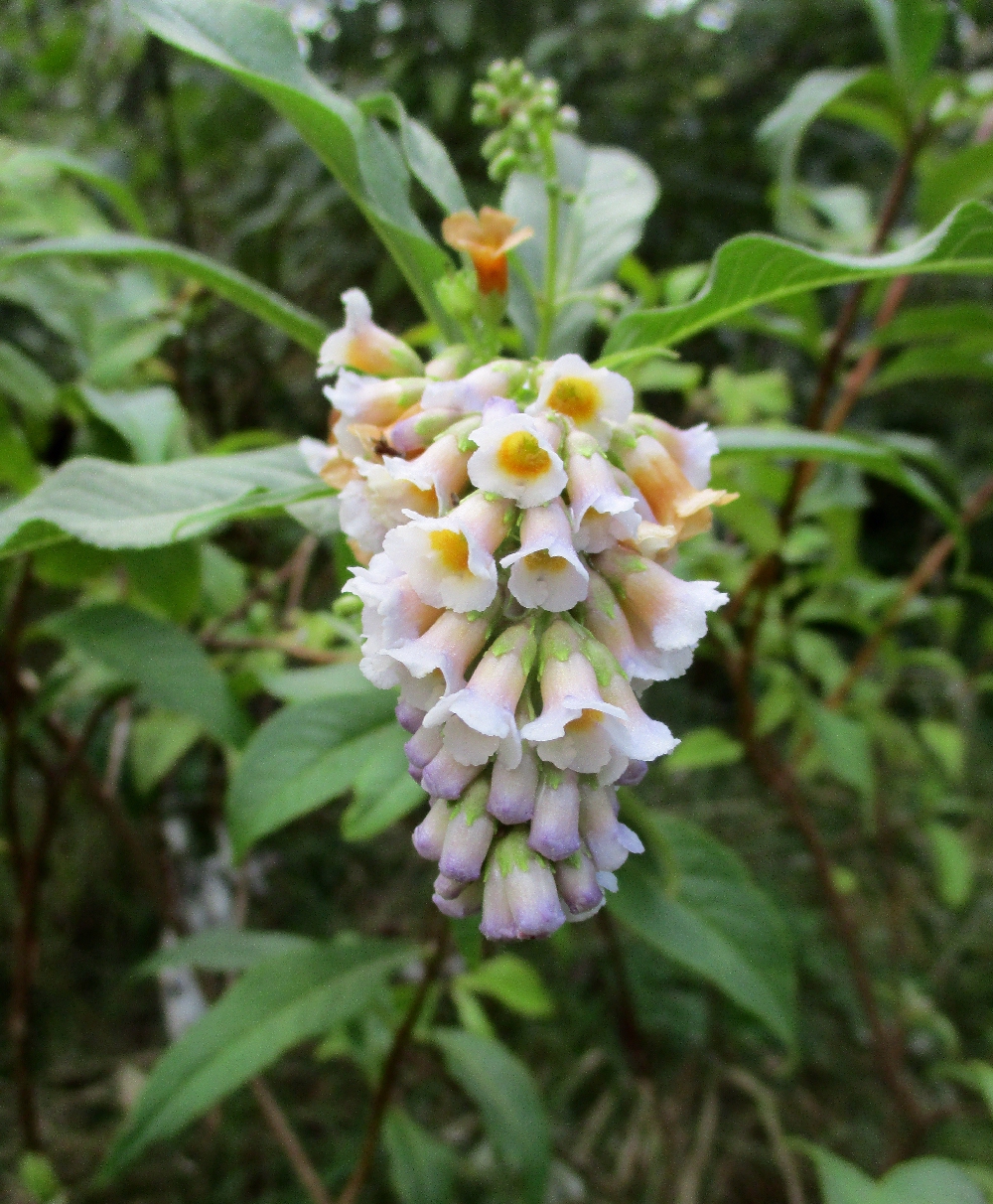
Buddleja forrestii form limitanea W/O 8046
Another collection from the Cangsham above Dali (Yunnan, China). I grew several of these from seed, and this one is my favourite. It has darker mauve flowers than either its siblings or other collections from this location, for example ACE 2522.
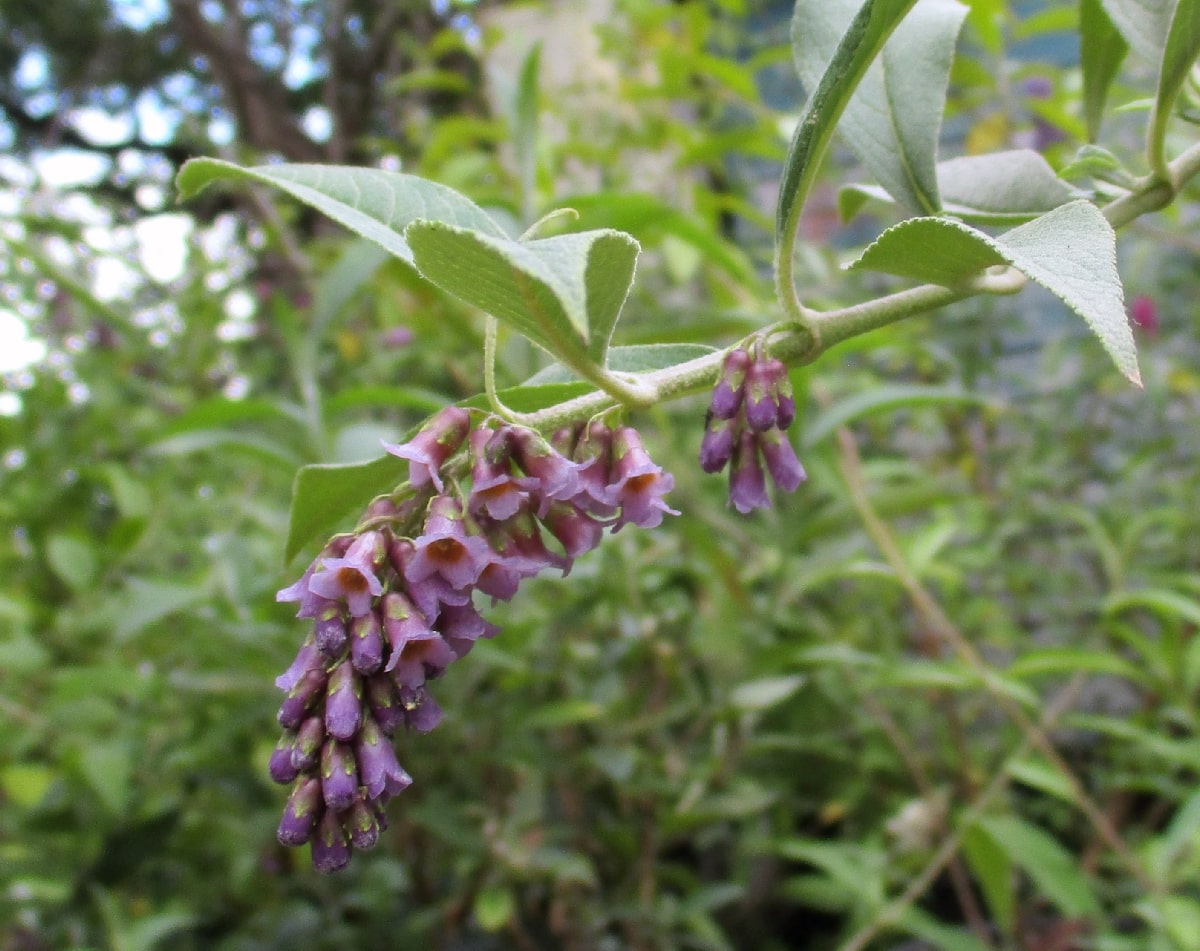
B. forrestii form limitanea or a Hybrid?
This plant with mauve flowers is a mystery. Labelled as B. limitanea, and looking exactly the same in habit and leaf as that form, the flowers are rather atypical in having longer, cylindrical corolla tubes and slightly tomentose (felted) parts. Its origins are unknown, and I suspect it is either a natural hybrid or one raised ex situ. It certainly looks to be descended from B. forrestii, and probably the B. limitanea form; which other species might be involved is more of a mystery, but B. davidii is a possibility.
I have speculated it may be the hybrid Buddleja X 'Hotblackiana' (B. forrestii X B. davidii var. veitchiana), first exibited in 1942 at the RHS by H.S, Hotblack of Cuckfield, Sussex (Journal of the Royal Horticultural Society, (1942) Vol.LXVII, pp565) and currently thought lost to horticulture; sadly, I am unable to confirm this identification.
It’s fully fertile and I have raised a number of its seedlings. It can cross with several different species.

B. forrestii x B. davidii
A chance hybrid I raised a while back, the pollen parent is probably B. davidii 'Gulliver'. Very long panicles like the seed parent, although the individual flowers are more delicate. Heavy B. forrestii foliage, and generally looking like that species, it's proving hardy and not too vigorous.

B. nivea x B. forrestii
Not every hybridisation I try works, and in this case the reciprocal failed. B. nivea is quite promiscuous and can be pollinated by many of the Asian species. With most of these hybrids, the B. nivea traits tend to dominate. This one is unusual: the foliage isn't very hairy and the individual flowers are quite large relative to most B. nivea hybrids.
Open full size image in a new window
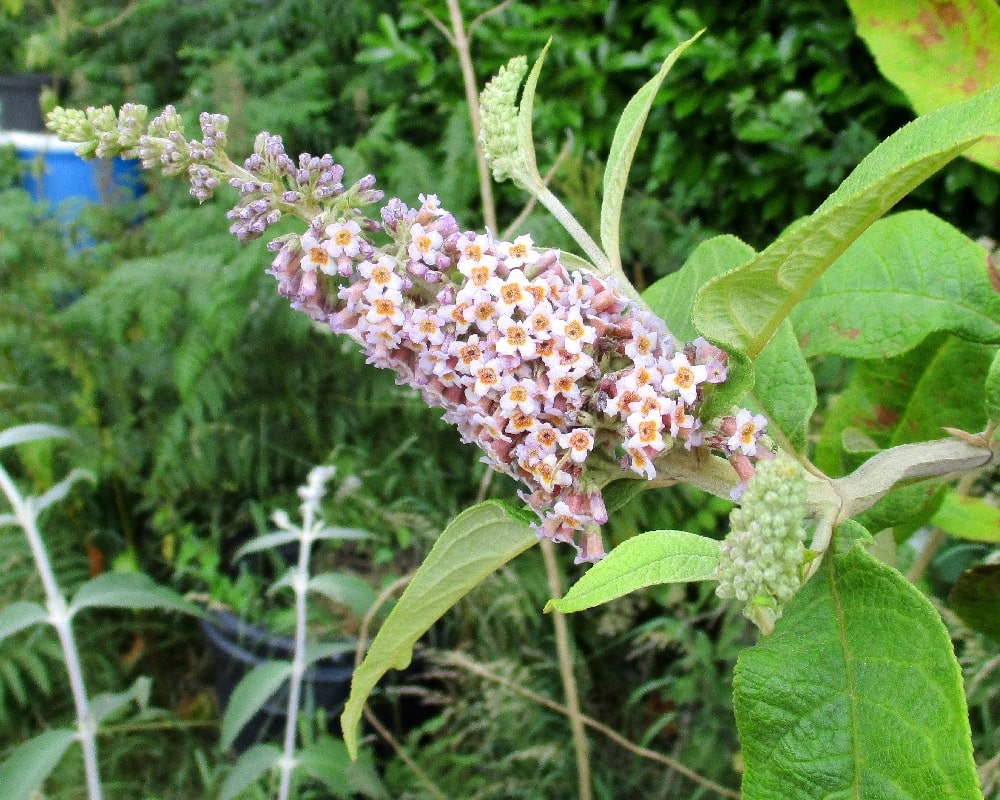
B. macrostachya
An example of the species growing in situ at 2000m, Lenteng, Mizoram, India. Some plants have these very upright and dense panicles. However, the individual flowers are identical to any other member of the species.
Photo by Paul Barney, Edulis Plants.
Open full size image in a new window

B. macrostachya
An example of the species growing in situ, Shirui, Manipur, India. The more familiar less upright panicle.
Photo by Paul Barney, Edulis Plants.

B. macrostachya
RF 040 X GWJ 9286
B. macrostachya seedling from a cross I made of RF 040 X
GWJ 9286. In some seedlings RF 040’s features were dominant and a
couple even had pink flowers. This one had inherited some of the
features found in the flowers of GWJ 9286, such as the intense orange
throat and softer, pure white corolla lobes. Interestingly, it also
flowered much later (well into October) than its siblings. Unfortunately, this seedling proved less hardy than its siblings.
Open full size image in a new window
B. macrostachya
RF 040 X GWJ 9286
Pink-flowered
Buddleja macrostachya is a polyploid species with a large genome, so a cross of two unrelated plants can throw up surprises. Two white-flowered parents may produce seedlings with pigmented flowers. This is a full sibling of the one above and has flowers that are bright pink; otherwise it's essentially the same as its siblings in form. The genetics of flower colour in Buddleja has not been extensively studied, although white flower colour is known to exhibit some dominance in B. davidii.
Open full size image in a new window
B. macrostachya
GWJ 9286 X RF 040 #1
B. macrostachya seedling from the reciprocal cross to the two shown above: GWJ 9286 x
RF 040. The variable siblings were all intermediate between the
parents, although the features of RF 040 showed some dominance. This
one has inherited the inflorescence form of RF 040 and the brownish tomentum on the stems and undersides of the leaves. All the plants of
both reciprocals were unmistakably B. macrostachya and all set
seed. They gave no reason to think they might be inter-specific
hybrids.
Open full size image in a new window

B. macrostachya
GWJ 9286 X RF 040 #2
B. macrostachya seedling also from the reciprocal cross: GWJ 9286 x
RF 040. This one is particulary vigorous and has large pendulous leaves with silvery undersides - very unlike its siblings. The inflorescences are particularly long, some over 40 cm in length, and produced in great profusion. Appears to be quite hardy (down to at least -8℃) and robust.
Open full size image in a new window
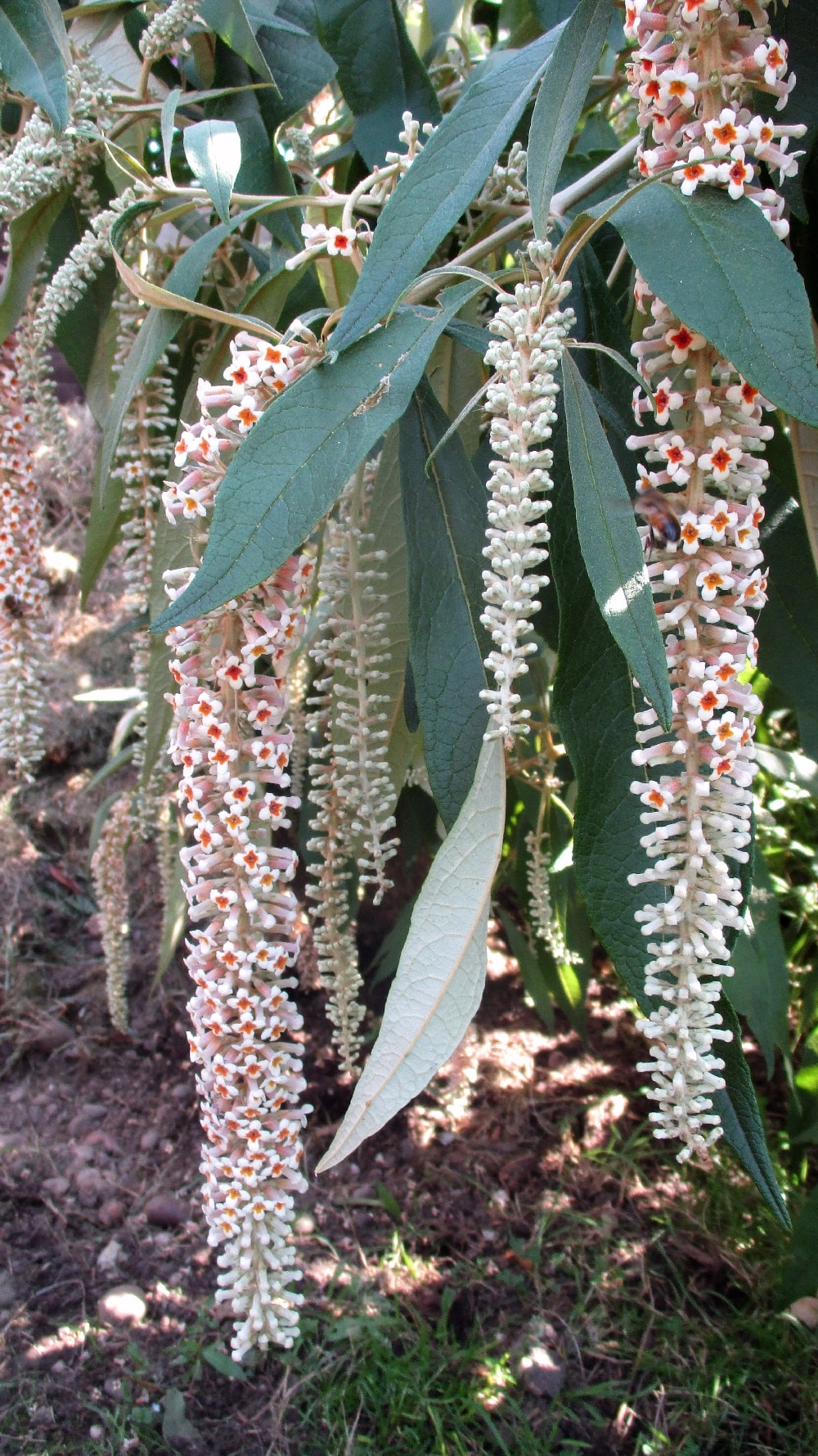
Email:
buddlejagarden@gmail.com
© The Buddleja Garden 2011-2025.

